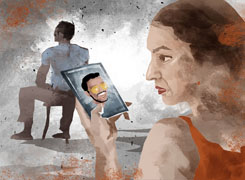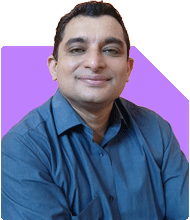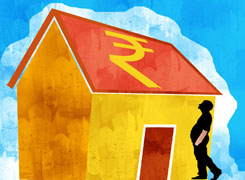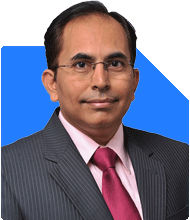Ramalingam Kalirajan |10902 Answers |Ask -Follow
Mutual Funds, Financial Planning Expert - Answered on May 15, 2025
He has an MBA in finance from the University of Madras and is a certified financial planner.
He is the director and chief financial planner at Holistic Investment, a Chennai-based firm that offers financial planning and wealth management advice.... more

Hi Sir, I am confused between HDFC FMP & C2i without tax and Regular Mutual Funds plan with tax deduction. HDFC FMP & C2i is (Fixed Maturity Plan and Click to Invest including insurance of 70 lacs ) plan, per year plan is to pay 7.5 lacs for every 5 years which will gain upto 1.20 Cr tax free amount under section 10D in 15 years, is this plan good to invest or investing those money in regular way into Mutual Funds will be good? I understand it will be taxable if I invest in MF however gain will be more compared to this policy? FYI I already have term insurance since last 5 years am paying for it. am not sure what to do? can you please advice me correctly. Many Thanks PT
It is good that you are comparing different products before investing.
You are thinking long-term and planning in advance. That is a great habit.
Let us now look at the facts from all angles.
You mentioned HDFC FMP and C2i insurance. Let’s compare these with mutual funds clearly.
Let’s go step by step.
Understanding the Structure of Insurance-Linked Investment Plans
These insurance investment plans combine life insurance with investment.
They may promise tax-free maturity under Section 10(10D).
These plans also usually have guaranteed maturity values or bonus additions.
But the returns are fixed and capped. They mostly fall between 5% to 6%.
There is very low liquidity. You cannot exit before 5 years easily.
If you surrender early, penalties are very high.
You already have a term insurance. So, life cover in these plans is not needed.
Paying Rs. 7.5 lakhs per year for 5 years is a huge commitment.
Once you start, you must continue for full 5 years, else you lose benefits.
These policies are marketed as safe and tax-free.
But inflation can easily beat these kinds of returns over long term.
Even if maturity is tax-free, low growth means less real wealth in hand.
Evaluating Mutual Fund Investment Option (With Tax Impact)
Mutual funds, especially equity-oriented, are linked to the market.
They are not guaranteed. But historically they gave better returns over 10-15 years.
Even after tax, mutual funds can give you more real returns than insurance plans.
The new tax rule says LTCG above Rs. 1.25 lakhs is taxed at 12.5%.
Even then, if a mutual fund gives 11% to 13% CAGR, net returns are much better.
You also get liquidity in mutual funds. You can stop, start or withdraw any time.
You can also step up the SIP amount based on your income.
No lock-in, no surrender charges, and no hidden costs.
You already have term insurance. That gives you pure life cover at low cost.
Mutual funds are only for investment. No mixing of life cover and wealth building.
When life cover and investment are separated, both work efficiently.
Comparing C2i + FMP Plan with Mutual Funds
In C2i plan, you will invest total Rs. 37.5 lakhs (7.5 lakhs x 5 years).
You are promised maturity of around Rs. 1.20 crores after 15 years.
This is like 6% return yearly, assuming tax-free payout.
In mutual funds, even if you invest the same Rs. 7.5 lakhs/year for 5 years,
And you stop fresh investment after 5 years, but stay invested till 15 years,
You can expect Rs. 1.80 crore or even more, depending on performance.
Even after tax, net wealth is much higher than insurance plans.
The flexibility and higher wealth creation makes mutual funds the better option.
Do not just look at tax-free maturity. Look at total wealth creation also.
Insurance is not meant to build wealth. Its only role is to protect life.
You already have term cover. So no extra cover is needed.
Your insurance should protect your family, not your investment goals.
Tax Confusion Should Not Cloud Long-Term Returns
Many people choose insurance plans just to avoid tax.
But they ignore the very low returns of these plans.
A mutual fund taxed at 12.5% can still beat insurance maturity.
For example, if you gain Rs. 10 lakhs in MF, tax is Rs. 1.25 lakh only.
But the remaining Rs. 8.75 lakhs is still more than what insurance plans give.
Long term compounding in mutual funds creates much more wealth.
Tax saving should never be the only reason for investment.
A Certified Financial Planner will always prioritise post-tax, real returns.
That helps you achieve your goals without compromise.
Key Gaps in Insurance-Linked Plans for Long-Term Wealth
Liquidity is poor. Your money is locked.
Returns are low. Real wealth does not grow fast.
Cannot stop premiums mid-way. You lose if you do.
Surrender charges are heavy.
Product structure is complex. Not fully transparent.
Sales people pitch it as tax-free, but ignore inflation impact.
No flexibility to change based on goals.
Policy benefits may not match future needs.
It is one-size-fits-all plan. No customisation is possible.
Why Mutual Funds Remain Most Efficient and Flexible
You can build a portfolio of large cap, mid cap, small cap and multi-cap.
You can change funds if performance drops.
You can pause SIP or withdraw if needed.
You can invest regularly, lumpsum or both.
You can align investments with your goals like retirement, child education, etc.
You can start with lower amount and increase later.
You can also reduce risk slowly as you get older.
Goal-based planning is possible only with mutual funds.
You can track performance any time online.
Regular funds through Certified Financial Planner give personalised service also.
Why Direct Funds Are Not Recommended
Many investors try to save commission by going direct.
But they miss out on review, correction, and expert help.
Wrong fund selection can hurt your goal badly.
Regular funds via Certified Financial Planner ensure you get continuous guidance.
Emotional decisions can ruin returns. Regular plan helps avoid this.
Review, rebalancing and advice is more important than small saving in cost.
Direct fund cost saving is small. But loss due to wrong move can be big.
Certified Financial Planner will guide you in every stage.
That service adds much more value than the small cost of regular funds.
Insurance Policies Like C2i Are Not Designed for Wealth Creation
Their focus is on death benefit, not high returns.
They mix investment with insurance. That reduces both benefits.
The cost structure is complex and opaque.
Once you invest, you lose control for many years.
Exit before maturity brings penalties.
You are forced to stay even if performance is poor.
Sales pitch focuses on tax saving and maturity amount.
But rarely show comparison with mutual funds.
Your long-term financial goals need better growth and flexibility.
What You Should Do
Continue your existing term insurance policy. That is important.
Avoid any new insurance-linked investment. It adds burden, not benefit.
Start or increase investment in mutual funds instead.
Use a mix of multicap, midcap and small cap for long term.
Do goal-based planning – for retirement, child education and emergencies.
Avoid being trapped by tax-free maturity or fixed return offers.
Always ask – is this helping my goal? Or just giving peace of mind?
Tax can be managed. But loss in wealth due to low returns can’t be recovered.
Invest with flexibility, liquidity and guidance.
Final Insights
Your instincts are correct. Mutual funds have more long-term wealth potential.
Do not mix investment and insurance. Keep them separate always.
C2i and FMP look attractive now. But they limit future opportunities.
Tax-free is good. But only when returns are also strong.
Mutual funds, with help from Certified Financial Planner, give clarity and control.
Flexibility, better returns and goal-based investing always win in the long run.
Make your money work harder for your child’s future and your retirement.
Avoid locking large money in rigid, fixed return products.
Mutual funds give you the power to grow, adapt and win financially.
Best Regards,
K. Ramalingam, MBA, CFP,
Chief Financial Planner,
www.holisticinvestment.in
https://www.youtube.com/@HolisticInvestment
You may like to see similar questions and answers below
Omkeshwar Singh | Answer |Ask -Follow
Head, Rank MF - Answered on Mar 19, 2021
Ramalingam Kalirajan |10902 Answers |Ask -Follow
Mutual Funds, Financial Planning Expert - Answered on Jul 24, 2024
Ramalingam Kalirajan |10902 Answers |Ask -Follow
Mutual Funds, Financial Planning Expert - Answered on Oct 29, 2024
Ramalingam Kalirajan |10902 Answers |Ask -Follow
Mutual Funds, Financial Planning Expert - Answered on Nov 01, 2024
Ramalingam Kalirajan |10902 Answers |Ask -Follow
Mutual Funds, Financial Planning Expert - Answered on Nov 02, 2024
Anu Krishna |1749 Answers |Ask -Follow
Relationships Expert, Mind Coach - Answered on Dec 17, 2025
Anu Krishna |1749 Answers |Ask -Follow
Relationships Expert, Mind Coach - Answered on Dec 17, 2025
Radheshyam Zanwar |6748 Answers |Ask -Follow
MHT-CET, IIT-JEE, NEET-UG Expert - Answered on Dec 17, 2025
Anu Krishna |1749 Answers |Ask -Follow
Relationships Expert, Mind Coach - Answered on Dec 17, 2025
Dr Shakeeb Ahmed Khan |184 Answers |Ask -Follow
Physiotherapist - Answered on Dec 17, 2025
T S Khurana |538 Answers |Ask -Follow
Tax Expert - Answered on Dec 17, 2025
T S Khurana |538 Answers |Ask -Follow
Tax Expert - Answered on Dec 17, 2025
Janak Patel |72 Answers |Ask -Follow
MF, PF Expert - Answered on Dec 17, 2025
Ramalingam Kalirajan |10902 Answers |Ask -Follow
Mutual Funds, Financial Planning Expert - Answered on Dec 17, 2025
Samraat Jadhav |2511 Answers |Ask -Follow
Stock Market Expert - Answered on Dec 17, 2025





























